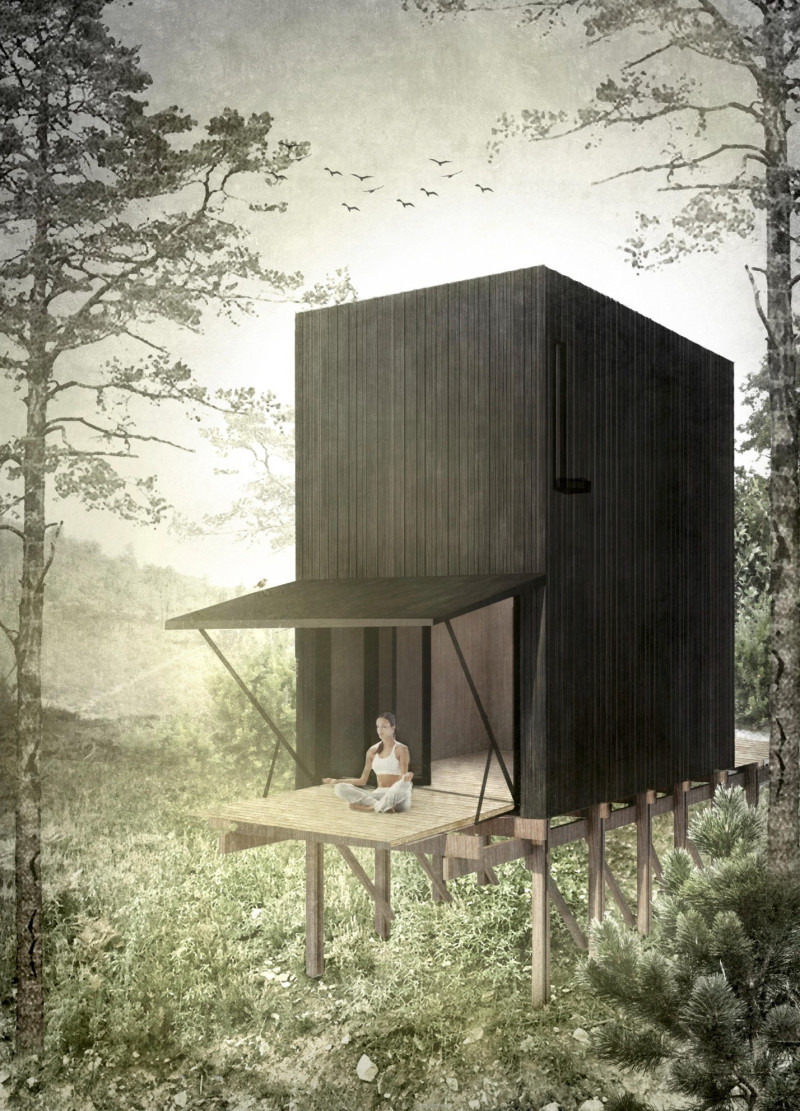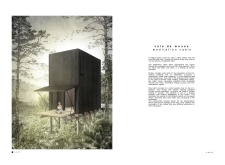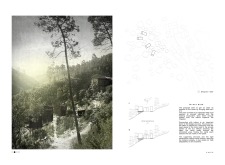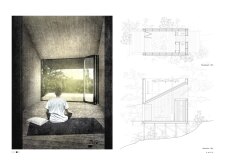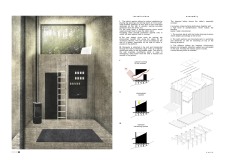5 key facts about this project
The Vale de Moses Meditation Cabin is designed to offer a peaceful space for reflection, surrounded by a reforested landscape. Located in an area rich with local vegetation, the cabin allows guests to step away from their daily lives and immerse themselves in a serene environment. The design focuses on privacy and tranquility, creating a sanctuary that invites individuals to connect with nature.
Design and Layout
The cabin features a thoughtful layout that guides visitors from the outside world to a tranquil interior. As guests walk along paths lined with native plants, they become part of the landscape. This approach enhances the sense of seclusion and prepares them for a meditative experience within the cabin. The design aligns with the natural contours of the land, further integrating the structure into its surroundings.
Material Selection and Adaptability
Each cabin consists of a simple wooden unit raised on a bracing platform. This design allows the cabin to adjust to varying terrain while keeping its environmental impact low. Local resources are primarily used, emphasizing sustainability. Insulating walls contribute to energy efficiency, helping to maintain a comfortable climate inside. The uncomplicated form reflects the purpose of the cabin while complementing nearby structures.
Sustainability Features
The cabin incorporates natural ventilation to create a fresh indoor environment. Large windows are positioned to facilitate airflow, reducing the need for mechanical cooling. Water management systems, such as rainwater collection and grey water recycling, are built into the design. The roof is equipped to accommodate photovoltaic panels, which provide energy for the cabin and minimize reliance on outside sources.
Final Design Detail
Inside, the cabin maintains a minimalist aesthetic, allowing occupants to concentrate on their meditative practices. The design includes ample windows that frame views of the surrounding landscape, inviting light and nature inside. This focus on simplicity encourages guests to engage deeply with their environment, reinforcing the cabin's role as a refuge for mindfulness and relaxation.


